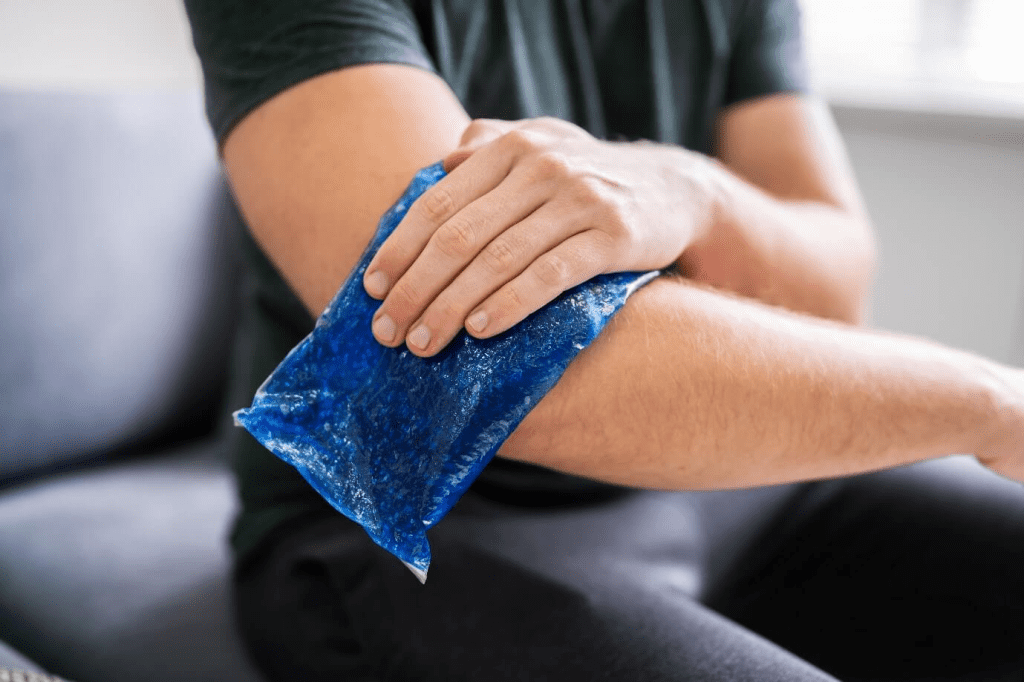Migraines are more than just headaches; they can be debilitating experiences that disrupt your entire day. For those who suffer from chronic migraines, finding relief can feel like an endless search. While medications and resting in a dark room are common remedies, there’s an unconventional trick making waves: the hot water migraine hack. It may sound too simple to be true, but this method could offer relief without the side effects of traditional medications.

You might wonder how something as basic as hot water could relieve a migraine. The concept is rooted in how blood circulation affects headache pain. When you soak your feet in hot water, the heat dilates the blood vessels in your feet. This process draws blood away from your head, reducing the pressure on the blood vessels in your brain that are often linked to migraine pain.
Step-by-Step Guide to the Hot Water Migraine Remedy
1. Gather Your Supplies
You’ll need a basin or tub large enough to comfortably fit your feet, water that’s as hot as you can tolerate without burning yourself, and a towel for drying off afterward.
2. Fill the Basin
Fill the basin or tub with hot water. Ensure the water is hot but not scalding. You want it to be warm enough to encourage blood flow but not so hot that it causes discomfort.
3. Soak Your Feet
Sit comfortably and soak your feet in the hot water. Allow them to soak for about 10-15 minutes. You may feel a gradual easing of the pressure in your head as the blood flow shifts.
4. Optional: Add Ice to Your Neck
For added relief, some people suggest placing an ice pack on the back of your neck while your feet soak in the hot water. The contrasting temperatures can help regulate blood flow more effectively, potentially providing quicker relief.
Why This Method Works
Migraines are often caused by the dilation and contraction of blood vessels in the brain. By soaking your feet in hot water, you encourage blood flow away from your head, reducing the pressure and, consequently, the pain. This method is particularly appealing because it offers a natural solution without the risk of side effects associated with over-the-counter or prescription medications.
Additional Natural Remedies for Migraine Relief
While the hot water trick can be effective, it’s important to have other natural remedies in your toolkit to combat migraines from different angles.
1. Stay Hydrated

Dehydration is a known trigger for headaches and migraines. Drinking plenty of water throughout the day can help prevent the onset of a migraine. If you’re already experiencing a headache, increasing your water intake might reduce its severity.
2. Use Caffeine Wisely
Caffeine can be a double-edged sword. For some, it can trigger migraines, but for others, it can enhance the effectiveness of painkillers and even provide relief on its own. If you choose to use caffeine, try to consume it consistently at the same time each day to avoid triggering a headache.
3. Try Ginger Tea
Ginger is a powerful anti-inflammatory that has been shown to reduce the intensity of migraines. Simply steep fresh ginger in boiling water to make a soothing tea. This remedy is a great alternative for those who want to avoid caffeine or need a calming beverage.
4. Apply Heat or Cold

Depending on the type of headache, applying heat or cold can offer relief. For tension headaches, which are often caused by muscle contraction, a warm compress on the neck or back of the head can help relax muscles. For migraines, a cold pack on the forehead or neck may be more effective in constricting blood vessels and reducing pain.
5. Practice Stress Management
Stress is a major trigger for many migraine sufferers. Incorporating relaxation techniques such as deep breathing, meditation, or yoga into your routine can help manage stress and prevent migraines. If you find it difficult to relax during a migraine, start with slow, deep breaths to calm your nervous system.
6. Keep a Migraine Diary

Tracking your migraines can help you identify patterns and triggers. Write down details about when your migraines occur, what you were doing beforehand, what you ate, and any other relevant factors. This information can be invaluable in finding the most effective treatment for your migraines.
Migraines vary widely from person to person, so what works for one person may not work for another. The hot water trick is just one of many potential remedies that can be tried without risk. The key to managing migraines is understanding your triggers and finding the combination of treatments that work best for you.
Migraines can be a challenging condition to manage, but natural remedies like the hot water trick offer a side-effect-free way to find relief. By understanding how blood flow impacts migraine pain, you can use simple methods like this one to potentially reduce your symptoms and regain control over your life. If this trick doesn’t work for you, don’t be discouraged—there are many other natural methods to explore. With patience and persistence, you can find a strategy that works for your migraines.


